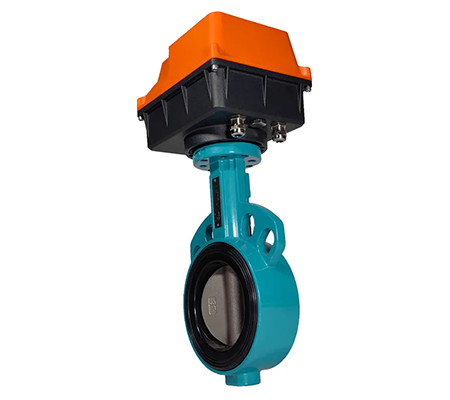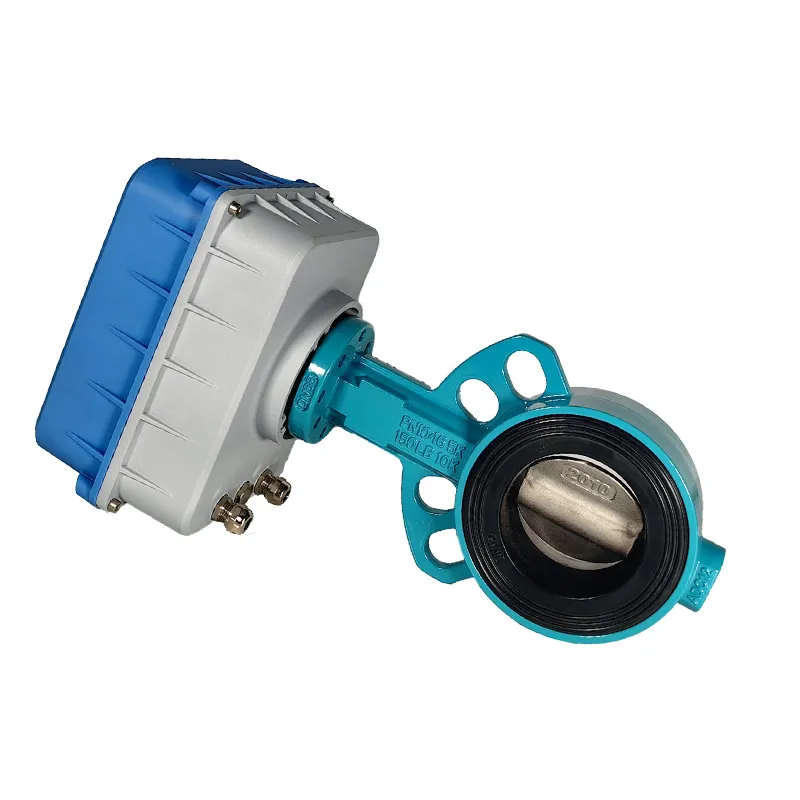Évitez que votre demande ne soit retardée dans la réponse, veuillez saisir votre WhatsApp/WeChat/Skype avec le message, afin que nous puissions vous contacter dans un premier temps
Nous vous répondrons sous 24 heures. En cas d'urgence, veuillez nous contacter par WhatsApp : +86 13188899036 ou WeChat : 0531-87968777. Vous pouvez également nous appeler directement au 0531-87968777.
* Nous respectons votre confidentialité et protégeons toutes vos informations. Nous utiliserons vos informations uniquement pour répondre à votre demande et ne vous enverrons jamais d'e-mails ou de messages promotionnels non sollicités.
Are you tired of slow, manual valve systems that waste time, energy, and money? In today’s fast-paced industrial world, manual valve operation is becoming a costly bottleneck. When seconds count and precision matters, hand-operated valves simply can’t keep up.
Think about it. Your team wastes precious minutes walking to each valve location. Human error leads to inconsistent flow control. And during emergencies? The time it takes to shut off flow could mean the difference between a minor issue and a major disaster.
The solution? Vannes papillon motorisées – the automation breakthrough that’s transforming industrial flow control.
A motorized butterfly valve is a flow control device that uses an actionneur to automatically rotate a disc inside a pipe. This disc turns to allow or stop the flow of liquids or gases. What sets these valves apart is their conception compacte and ability to work with remote signals.

Vanne papillon électrique
Every motorized butterfly valve has four main parts:
When your control system sends a signal (typically 4-20mA), the actuator receives it and turns the shaft. This rotates the disc to the exact position needed. The torque specifications determine how much force the actuator can apply, which is crucial for high-pressure systems.
“The precision of modern motorized valves is remarkable,” explains Dr. Li , Engineer at Navarch Valve Technologies. “Our latest models can achieve positioning accuracy within 0.5 degrees, ensuring exact flow coefficient (Cv) control even in challenging industrial environments.”
Advanced models feature position feedback systems that send data back to your control center, confirming the valve’s exact position. This creates a closed-loop system that maintains perfect flow control even when conditions change.
Motorized butterfly valves excel in these key areas:
The global push for energy efficiency has put motorized butterfly valves in the spotlight. A recent study found that Belimo IoT Valves reduced HVAC installation time by 40% and cut energy use by 18%.
In Beijing, a commercial high-rise installed Zigbee Smart Valves throughout their heating system. The building reduced energy consumption by 22% in the first winter. The valves’ ability to make micro-adjustments based on real-time temperature data was the key to this success.
Modern motorized valves now meet strict safety standards:
“We needed valves that could function reliably in our chemical processing facility where corrosive materials and occasional explosive atmospheres are present,” says Carlos Rodriguez, Process Control Manager at BrasChem Industries. “Navarch’s stainless steel motorized butterfly valves with ATEX certification gave us both the performance and safety compliance we required.”
The wrong valve material can lead to costly failures and dangerous leaks. Here’s a simple guide:
| Type de média | Meilleur matériau | Pourquoi ça marche |
|---|---|---|
| Clean water | Cast iron | Cost-effective, long-lasting |
| Salt water | Acier inoxydable | Resists corrosion |
| Chemicals | PTFE-lined | Chemical resistance |
| Vapeur | High-temp alloys | Withstands heat |
| Food/pharma | Sanitary steel | Meets hygiene standards |
Industry fact: Stainless steel valves have 44% market share in chemical plants due to their excellent corrosion resistance.
Getting the size right is critical. Too small? Pressure drop and flow restrictions. Too large? Wasted money and poor control.
Two key factors to consider:
You have two main options:
Actionneurs électriques (78% of new installations)
Actionneurs pneumatiques
“We’ve seen a clear shift toward electric actuators in the past five years,” notes Sarah Johnson, Industry Analyst at Valve Technologies Today. “With Navarch’s new generation of low-power, high-torque electric actuators, even applications that traditionally used pneumatics are converting to electric for better control and IoT integration.”
Make sure your valve meets these key standards:

How to Choose the Right Motorized Butterfly Valve
Keep your valves working perfectly with these steps:
| Problème | Cause possible | Solution |
|---|---|---|
| Valve won’t open/close | Power loss | Check electrical connections |
| Actuator failure | Test actuator separately | |
| Disc obstruction | Remove valve and inspect | |
| Leaking when closed | Worn seat | Replace seat component |
| Misalignment | Recalibrate valve position | |
| Damaged disc | Replace disc assembly | |
| Unusual noise | Cavitation | Adjust downstream pressure |
| Loose mounting | Tighten mounting bolts | |
| Worn bearings | Replace bearings |
“Proper maintenance extends valve life by 40-60%,” says Michael Chen, Maintenance Director at Navarch. “Our Vanne intelligente 4G customers receive real-time alerts when performance metrics indicate maintenance is needed, often preventing failures before they happen.”
“What sets leading manufacturers apart is not just the valve quality, but the engineering support,” explains Dr. Wang from Beijing University of Technology. “Companies like Navarch don’t just sell valves – they provide complete system integration services and ongoing technical support that ensures optimal performance throughout the valve’s lifecycle.”
Oui – many models include commande manuelle features. Some advanced models like Navarch’s Vanne de régulation proportionnelle (réinitialisation hors tension) include backup power systems or fail-safe positioning that automatically moves the valve to a safe position during power loss.
Cavitation occurs when pressure drops create vapor bubbles that collapse and damage your valve. To prevent it:
With proper maintenance, a PTFE-lined valve typically lasts 10-15 years. However, factors like temperature, chemical exposure, and cycle frequency can affect this. Some newer composites developed by companies like Navarch are extending this to 15-20 years even in harsh chemical environments.
Modern smart valves offer multiple communication protocols:
The days of scheduled maintenance are ending. New AI systems analyze valve performance data to predict exactly when maintenance is needed:
“Our newest generation of smart valves can reduce maintenance costs by up to 35% through predictive analytics,” says Zhang Min, R&D Director at Navarch. “By integrating advanced sensors with machine learning algorithms, we’re able to give customers unprecedented insight into valve health and performance optimization.”
The push for greener operations is changing valve design:
The global motorized valve market is booming:
Oil and gas remain the biggest users (61.2% market share), but water treatment and HVAC are growing rapidly as smart building technology expands.
In today’s world of automation and efficiency, motorized butterfly valves are no longer a luxury—they’re a necessity for competitive operations.
The problems of manual valve operation—time waste, human error, safety risks, and inconsistent performance—are solved with these intelligent flow control devices. By choosing the right valve with the proper materials, sizing, and automation features, you’ll improve system efficiency while reducing energy consumption and maintenance costs.
As we’ve seen, the market is growing rapidly, with innovations in smart technology, predictive maintenance, and sustainability driving the next generation of valves.
Whether you’re designing a new system or upgrading existing infrastructure, partnering with experienced manufacturers who understand both valve technology and system integration ensures you’ll get the perfect solution for your specific needs.
This article was researched and written by our industrial automation team with over 20 years of combined experience in valve technology and flow control systems.
